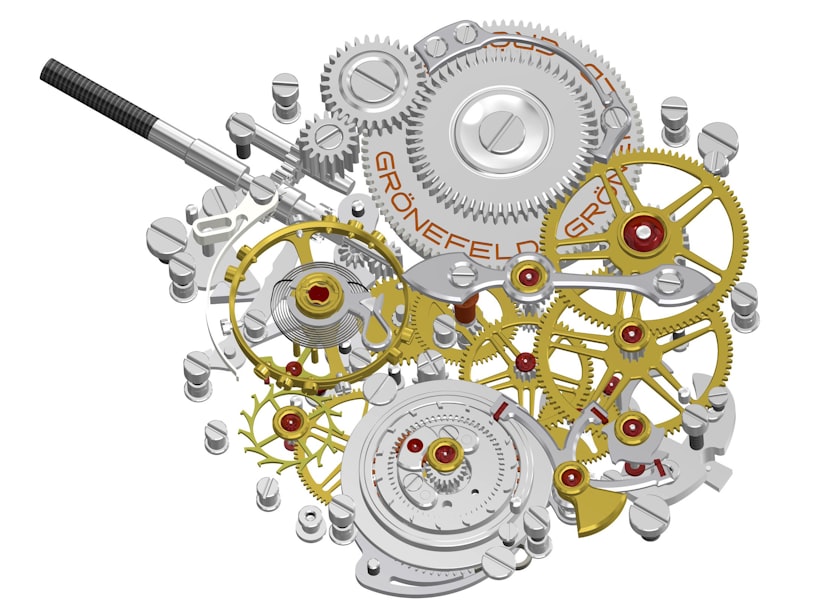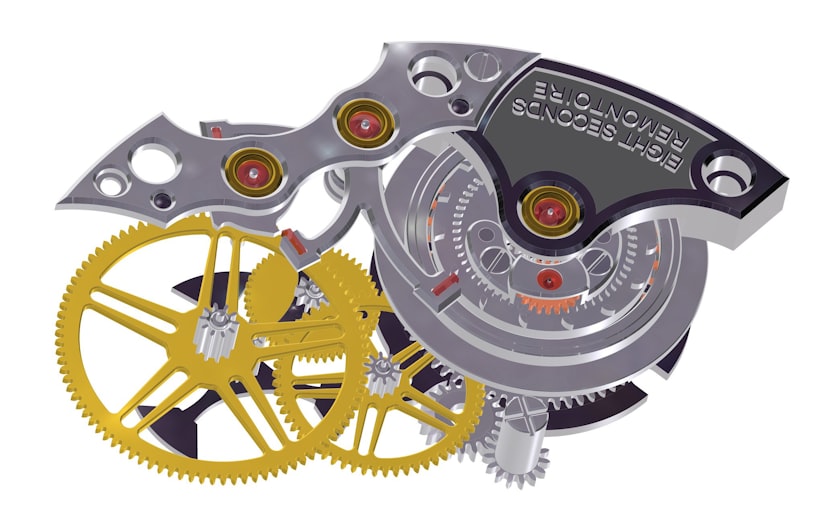The Grönefeld Brothers hail from the town of Oldenzaal, in the Netherlands, close to the border with Germany; they're third-generation watchmakers who, after training and considerable professional experience in Switzerland, began making their own watches, under their own name, in 2008. Their first watch was a complicated minute repeater with tourbillon, but they're probably best known for their One Hertz wristwatch with deadbeat seconds, which was a big hit for the brothers in 2011. (HODINKEE covered the One Hertz when it was announced at Baselworld.) As alumni of Audemars Piguet Renaud et Papi, Tim and Bart have had exposure to some of the most complicated watches, and technically demanding projects, in modern horology, and their newest watch incorporates a pretty rarefied complication: the remontoire d'egalité.

The remontoire d'egalité is, as you may have read in some of our previous coverage of the complication, one of horology's oldest attempts to cope with the problem of delivering a constant amount of power to the escapement. They come in two flavors: gravity remontoires, which are used in weight-driven pendulum clocks; and train remontoires. The latter are found in spring-driven clocks and watches, and they work in a pretty simple way. Every watch is driven by the force provided by a spiral spring. The problem is that that force weakens as the spring unwinds, which affects accuracy.


In a watch or clock with a spring remontoire, the mainspring does not power the escapement and balance directly. Instead, its energy is used to periodically wind up a second spiral spring placed on the axis of one of the train wheels (frequently, the fourth wheel). This second spring therefore will provide an almost unvarying amount of torque, as long as there is enough energy in the mainspring to rewind it periodically. As the mainspring winds down, it will of course eventually reach a point where its energy is no longer sufficient to overcome the resistance of the remontoire spring.

According to the brothers, the inspiration for the watch came from a church clock that the Grönefeld brothers' father and grandfather have been responsible for keeping running. The clock is in the village of Asten, and has a remontoire built into it. The reason for its presence in the clock is that the display is at a considerable height above the actual movement, and the remontoire is necessary to control the extra power needed to drive the hands (another interesting technical feature of the clock, according to the Grönefelds, is the minute hand, which instead of being driven continuously by the motion works, instead jumps once every 30 seconds in order to break any ice which might accumulate on it during the winter time). The name of the 1941 Remontoire watch is taken from the date of birth of Sjef Grönefeld, father to the brothers, who can be seen below working on the mechanism of the clock in question; the movement was made and installed in 1913.

One of the most basic characteristics of any remontoire is the frequency with which it winds up the remontoire spring. In the 1941 Remontoire, the remontoire spring is re-wound once every eight seconds. Below, you can see the basic arrangement. The mainspring barrel is at the top of the image, and you can follow the gears counterclockwise to the three-armed anchor that releases the gear train once every eight seconds to allow it to rewind the remontoire spring, in the circular housing at the bottom of the image.

And below is an image showing the remontoire mechanism in greater detail. If you look closely, you can see the five-lobed cam that releases the remontoire anchor, to the extreme left in the image.

Based on the images we've seen so far from the Grönefeld brothers, finishing is very high quality indeed. Here's the actual anchor for the remontoire.

A final technical note is the three-armed element visible through an aperture in the dial at 6:00. This is a speed governor, whose role is to moderate the speed at which the gears turn when the remontoire spring is rewound. Without it, the train gears would turn very quickly and there would be a risk of damage to the movement.
One of the most famous, and most quoted, comments on this particular complication (and as with the tourbillon and the fusée, there are some who would argue that as it provides no additional information – the remontoire is a regulating device and not a complication per se) is from none other than Dr. George Daniels, who provided what's always struck me as the definitive word on the place of the remontoire in modern watchmaking:
"The use of the remontoire is by far the best method of smoothing the power supply, but it is complex and costly to make. For this reason watches with remontoires are very rare, and this, combined with their attractive action, gives them a special place in the affections of the connoisseur of mechanics. The fact that the mechanism is quite unnecessary merely adds to its charm." –Daniels, Watchmaking

The Grönefeld 1941 Remontoire will be available in white or red gold; case diameter 39.5 mm x 10.5 mm, with 66 case parts. Movement, caliber G-05, 32 mm x 5.5 mm, 36 jewels with power reserve of 36 hours. Stopworks to stop the watch at 36 hours to ensure engagement of the remontoire for the entire running time. Free sprung balance; spring with mathematically correct terminal curve. Frequency, 21,600 vph. More info from Grönefeld right here.
Don't have the HODINKEE App yet? Get years of amazing watch content plus new stories, breaking news, and access to great new features like HODINKEE Live, free on iOS.
No comments:
Post a Comment